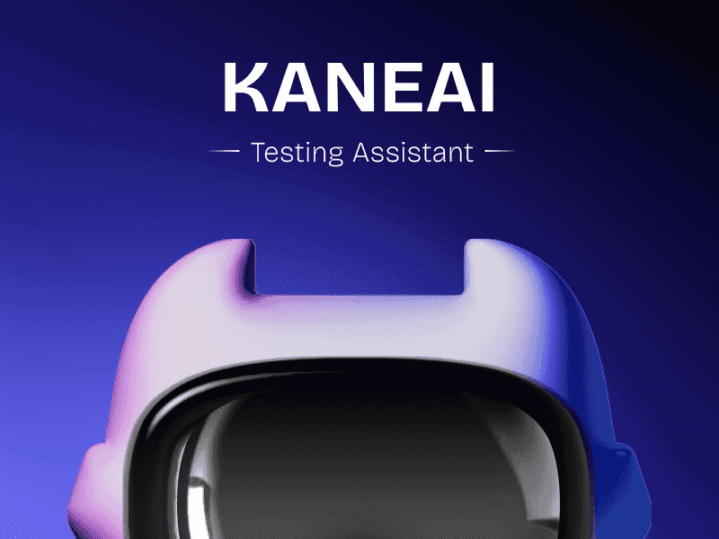A small error that goes undetected in testing until the last minute can be costly and annoying. That is why autonomous regression and smoke test execution are critical. Regression testing ensures that new changes do not break things that already work with regular upgrades. Smoke testing aids in the early detection of flaws. It establishes if the application is stable enough to carry out more thorough testing.
However, there are challenges in both approaches, including maintenance, optimisation, human error, and time consumption. Innovation in testing methodology might therefore provide a prompt and dependable solution. By using AI to perform smoke tests and autonomous regression, the entire testing process improves, which shortens the time to market. AI is revolutionising software testing techniques to increase their accuracy and efficiency. By autonomously developing test cases, executing tests, and evaluating test results, AI QA agents can reduce the amount of work that manual testing requires. Ultimately, AI will eliminate labour-intensive and error-prone processes from execution.
In this article, we will discuss the role of AI QA agents in autonomous regression and smoke test execution. We will also provide some key considerations that must be followed while implementing AI into it. However, before moving to that, let’s first understand autonomous regression and smoke test execution with the AI QA agent.
AI QA Agent in Autonomous Regression

Autonomous regression checks for flaws that may have been introduced due to modifications or improvements made to a software build. The objective is to guarantee that, regardless of any updates, all prior functionality still functions as intended. Regression testing can be simplified by AI without the need for complex methodology or thought processes. AI QA agents mimic human behaviour and intelligence, whereas machine learning methods enable computers to learn on their own without human intervention.
Machine learning algorithms can acquire data and use analysis of patterns to obtain insights that help testers make better decisions. During regression testing, these techniques aid in determining test coverage and improving test suite selection. ML algorithm predictions can be successfully applied to regression testing. Understanding AI-based test automation solutions helps QA experts become more efficient. Regression testing with AI can save time by automating all similar flows, improving code optimisation, and creating automated test cases.
The Role of the AI QA agent in Smoke Test execution

The goal of smoke test execution is to verify that an application has all of its essential features. It establishes if the application is stable enough to carry out more thorough testing. Leveraging AI helps improve smoke test execution by automatically selecting, classifying, and executing a subset of crucial tests to confirm the essential functionality of the newly released software build. As a result, smoke testing is no longer a manual, reactive procedure but rather a more effective, proactive one that is linked directly into pipelines for continuous integration and continuous deployment (CI/CD).
Applying machine learning (ML) to the testing process increases intelligence while reducing repetitive effort. By evaluating the solutions to identical problems discovered in the past, these algorithms frequently identify resolutions to challenges that arise in the future.
AI QA agents are more intelligent than standard automation scripts, which are frequently inflexible and require regular maintenance. This intelligence is quite useful for smoke testing. AI agents predict which tests are most important to run based on risk assessments, historical defect trends, and recent code modifications. This guarantees that as the application develops, the smoke test suite stays concise and applicable.
The Role of AI QA Agents in Autonomous Regression
- Enhanced effectiveness- Every time the code is updated, autonomous regression is carried out again, which takes time and effort. AI-based testing solutions, on the other hand, ensure consistently high-quality software by running a rapid, continuous testing procedure. It generates test scripts automatically based on previous inputs. Testers do not have to waste too much time on the routine operation as AI tools can be able to test software faster. Therefore, AI will speed up the testing process, minimise manual labour to a great extent, and increase the efficiency of regression testing.
- Improved precision- The use of AI-driven testing can find software bugs that might otherwise be unidentified and cause problems. AI can be used in place of conventional testing methods to more accurately and efficiently collect, record, and analyse data. Artificial intelligence-powered autonomous regression improves the accuracy and efficiency of testing by automatically identifying system problems. As a result, there is less possibility of a software release that is flawed, and the applications are more accurate and reliable.
- Scalability- The software requires more advanced test suites as new features and improvements are implemented. As user requirements expand, so does the application’s complexity. Consequently, the use of AI can make it easier to scale, handle code modification, and develop intelligent change recognition of the user interface.
- Cost-cutting- Regular and faster completion of such tasks by AI-based testing systems promotes cost optimisation. AI software testing is more economical than manual testing and allows testers to carry out these tasks more frequently. AI cuts down on resources, time, and effort spent on software testing. Additionally, it promotes cost efficiency without compromising the calibre of the final output.
How do AI QA Agents work in Smoke Test Execution?

Creating test cases and setting priorities- Based on experience, requirements, user data, and code, AI algorithms are able to quickly generate test cases. The goal of this technique is to optimise the smoke test performance that a team can execute. To improve testing speed and accuracy, testers can use AI algorithms to prioritise test cases and create a set of tests. The data analysis techniques available to the QA team allow it to identify potential hazards and opportunities in a very short time. Also, processes such as test script development, test case execution, and report generation are automated, which reduces the time used in manual testing.
Automated adaptation and management of test suites- Continuous testing may lead to mistakes. To maintain an effective test suite, AI can identify out-of-date test cases and create and update automated test cases. By analysing new scripts and identifying errors, machine learning models enhance existing code coverage. Breaking down data, analysing trends and patterns, assessing potential hazards, and gaining better insight are all made easier and faster by machine learning algorithms.
Intelligent test data generation and data-driven test execution-Based on the collected data, AI-based systems generate test cases that cover a range of scenarios and possible problems. NLP is used to interpret codes and find possible scenarios. Deep learning algorithms predict and provide the required test cases. AI-driven tools can determine the most effective test suite and optimise the smoke testing procedure by evaluating the collected data. This minimises the time and resources needed by guaranteeing only pertinent test execution.
Detecting anomalies and using predictive analytics- Machine learning and deep learning approaches are used in predictive analysis and effective defect detection to maximise the performance of smoke tests. By evaluating collected data or previous input, AI may anticipate and identify possible issues and hazards. Defect analysis by AI provides important insights into the root causes of software bugs. These tools assist QA in fixing structural issues and enhancing overall software quality.
Key Considerations in Implementing AI in Autonomous Regression
Biases and ethical issues with AI systems
AI and ML models train on historical data sets, and if those datasets contain biases, resulting models can behave similarly. Biased training data can lead to inadequate testing coverage and ethical issues in both autonomous regression and smoke test execution. These biases must be considered and reduced by ensuring that the data sets are trained diversely. To avoid bias and illegal discrimination, developers must prioritise the integration of data sets and perform extensive analysis. This involves seeking out diverse viewpoints and making sure that data sets represent a diverse community.
Quality and accessibility of data for AI model training
The quality of training and the availability of data determine whether an AI system succeeds or fails. The most important component of AI models is data, which is used to train machines to learn and make predictions. As AI models analyse data to identify patterns and make predictions, there is a need for sufficient data availability. The data input into AI algorithms must be relevant or of high quality to guarantee that they provide valuable insights into the testing process.
Integrating existing testing procedures with AI technology

Integrating AI tools into the existing testing process requires careful planning and execution. Teams must establish objectives for evaluating the effectiveness of AI-based regression and smoke test deployments. They must think about AI-based tools that meet the testing needs before making their choice. The most popular option available among many is LambdaTest, which offers integrated tools, scalable infrastructure, and on-demand access to testing environments.
KaneAI is a Generative AI testing tool that helps teams plan, author and maintain end-to-end tests using everyday language rather than heavy scripting. It supports workflows across web, mobile, API, database and accessibility layers, converting your natural-language instructions into executable tests that work on real devices and browsers.
KaneAI integrates with existing CI/CD tools and developer workflows, enabling teams to trigger test runs, generate test modules and manage their test life-cycle all in one place. It also features auto-healing and adaptive modules to reduce test-maintenance overhead as the application under test evolves.
LambdaTest’s KaneAI integrates generative AI into its own platform, similar to how ChatGPT test automation does. Instead of utilising a separate chatbot, this enables testers to create executable test cases and automate test procedures using plain English directly within LambdaTest, providing a more integrated experience.
Along with autonomous regression, LambdaTest can also create extensive smoke tests based on broad objectives or user needs.
By comparing screenshots from various browsers and devices, its smart UI Cloud employs AI to carry out intelligent visual testing. This helps testers identify problems by highlighting visual regressions or unexpected UI changes, without going through everything manually. The AI-driven self-healing capabilities allow test scripts to instantly adjust to small UI changes, minimising flaky or inconsistent test failures and test maintenance time.
Use human judgment
AI cannot completely replace a human’s capacity for understanding the environment and perception. To guarantee the highest quality, AI and human testers must work together for longevity. Therefore, collaboration between the testing and development teams is required to ensure a smooth incorporation of AI-based testing.
Upskilling for using AI-powered tools
To use AI-powered tools, testers need specialised knowledge and abilities. Sometimes, AI systems can be extremely complicated. Because code is logically organised into classes and methods, conventional methods are easier to understand. Designing test data is challenging when dealing with AI-driven test cases. It necessitates a thorough comprehension of the procedure and needs to be carried out by a qualified QA specialist in AI-powered technologies.
Conclusion
In conclusion, AI QA agents have completely transformed the regression and smoke testing procedure. From automated test case generation to predictive defect detection, AI-based testing is set to revolutionise the way testers ensure software reliability. As more research is done in areas like robotic process automation and natural language processing, AI will continue to develop its testing skills.
AI improves accuracy and increases ROI, making QA processes more efficient. As technology develops, tasks requiring human judgment might get taken over by AI QA agents to perform autonomous regression and smoke test execution. Test cycles will be released more quickly due to AI and ML, which will also remove a large number of tests for coding modifications.
